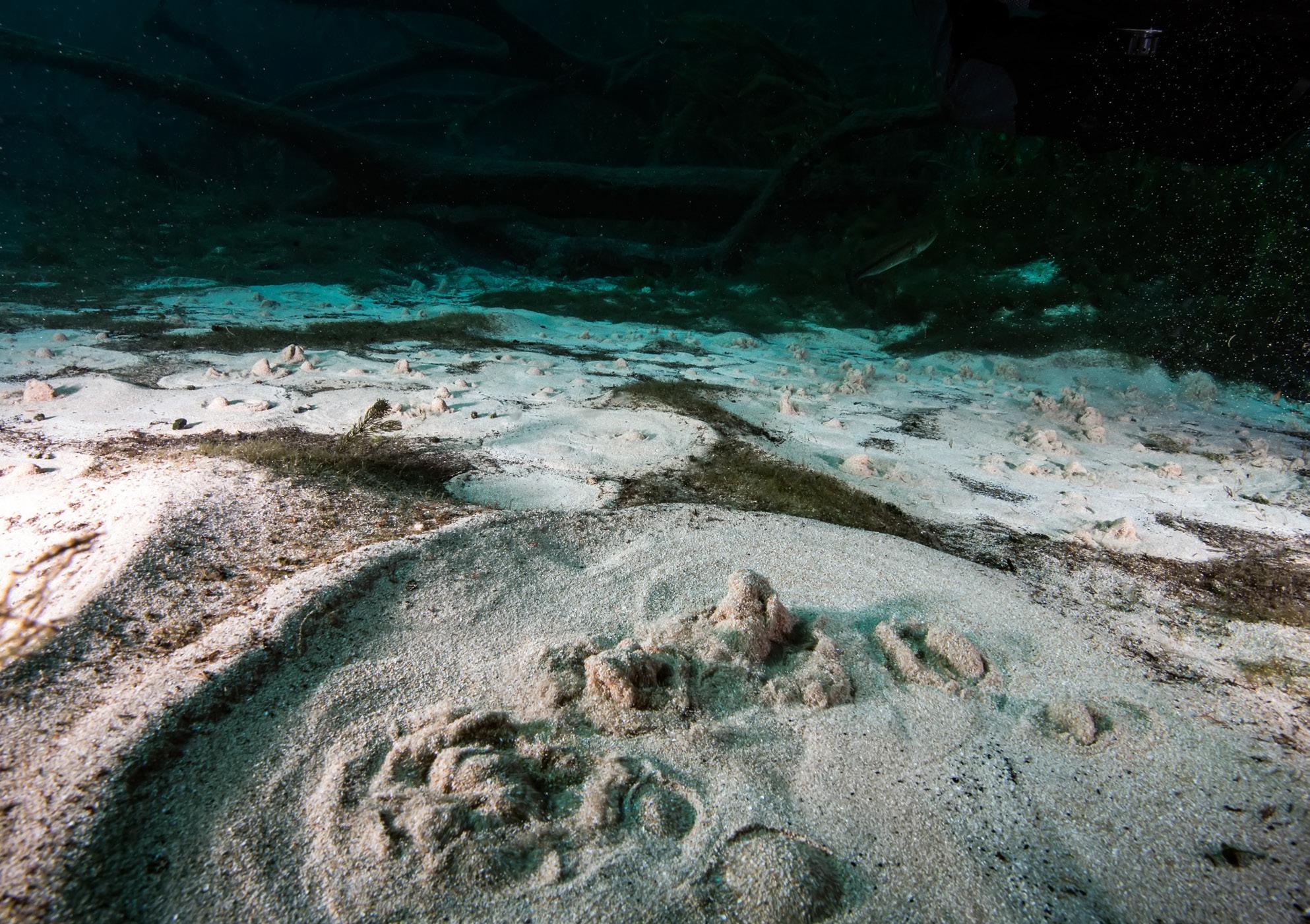
A new study from Texas State University Meadows Center for Water and the Environment shows how many springs have dried up since a comprehensive study completed in the 1970s. Pictured above is water bubbling up from the aquifer below Spring Lake.
Photo by Jennifer Idol/www.theunderwaterdesigner.com

Robert Mace

Nohemi Galviz
DISAPPEARING SPRINGS
New TXST study shows 'overwhelming' increase in dry springs across state
The state is rebounding from one of the worst droughts since the 1950s. That paired with overpumping and a population boom that seemingly requires more water than the aquifers can supply, is drying up Texas springs. In fact, research out of Texas State University Meadows Center for Water and the Environment shows that there are almost three times as many dry springs across the state as there were around five decades ago.
According to aTexas State University press release, this new research, which is co-authored by the Meadows Center for Water and the Environment Executive Director Robert Mace and Texas State University Undergraduate Research Assistant Nohemi Galaviz, builds upon the work of Gunnar Brune — Major and Historical Springs of Texas (1975) and The Springs of Texas, Volume 1 (1981).
Mace’s interest in diving into this topic began when he was invited to co-author an encyclopedia entry on the status of springs in Texas. He said he turned to Brune’s work, which he then realized was approximately 50 years old. The topic had not been revisited since.
Mace said much of the data on springflow used in their study came from satellite images of the various springs, but some of those spring images were difficult to see and required a visit. He also crowdsourced information from a Texas Springs Facebook group composed of scientists and citizen scientists.
“I was expecting that we would see more springs going dry from 50 years ago because, in many cases, the reason springs go dry is because of groundwater pumping and lowering levels in aquifers. There’s been three times as much overall total pumping of the state’s aquifers [that has] occurred since Brune’s report was published,” Mace said, adding that the numbers were still a bit overwhelming. “I was surprised that three times as many [springs] had gone dry since his study.”
As far as local implications, the two major springs in Hays County are San Marcos Springs and Jacob’s Well.
“Both of those springs have continued to flow, but as I’m sure you’re aware, Jacob’s Well has been struggling more and more since the turn of the century,” Mace said, adding that although Jacob’s Well was closed last summer “those recent rainfalls brought back the flows.”
According to the United States Geological Survey, commonly referred to as USGS, website, Jacob’s Well had zero discharge from June 20, 2023 to Jan. 21, 2024 — other than two brief intermittent spikes following local rainfall.
Mace said there are things that can be done to reanimate the lost springs.
“The big one is reducing the pumping of the aquifers. There was one spring that was clearly dry during Brunes work,” Mace said. “It was Comanche Springs in Fort Stockton, Tx. It had flowed, and then it dried due to groundwater pumping. It completely stopped flowing in ‘61. It has started to come back. Not consistently, but every winter season when they’re not pumping as much for agriculture, the spring has been coming back for the last ten to 20 years. So there’s a direct correlation there.”
Mace said that in the case of Jacob’s Well, there is also a direct connection between spring flow and overpumping.
“Drought is still an important part of it, but the pumping is what is really affecting springflow,” Mace said. “So decreasing pumping out there would either minimize or perhaps even eliminate those springs going dry during droughts.”
Mace said it's important to note that the springs that are listed in his study as having gone dry have literally done so. That doesn’t mean Texas hasn’t lost springs to other sources, and specifically in Hays County that is the case for three springs: Mill Springs, Bishop Springs and Wolle Springs.
“There’s more springs we’ve lost, because they’ve been inundated by reservoirs,” Mace said. “For example, there’s three springs that got swamped out by Canyon Lake. So there isn’t just pumping and drought that can cause springs to fail, but we can lose those springs also through other means such as reservoir inundation… [and] Dallas put a high rise over one of theirs. In some cases they can be bulldozed away.”
Although Mace and the Meadows Center take no position on reservoirs, he admits they are controversial.
“Reservoirs certainly have an environmental impact,” Mace said. “In this case, these three springs. Who knows what was living in them, but [those creatures] almost certainly have been affected by the reservoir construction. To be balanced … when there’s a reservoir and when there is no water coming down the river like there was with this recent drought. ... Many times the operators are continuing to release water from the reservoirs, so that’s providing ecological benefits downstream.”
To learn more and find the link to the study go to news.txst.edu/ research-and-innovation/ 2024/research-showsincrease- in-texas-drysprings. html











